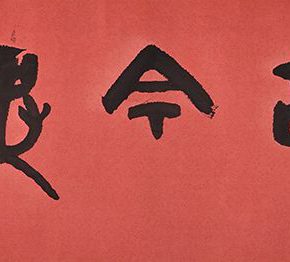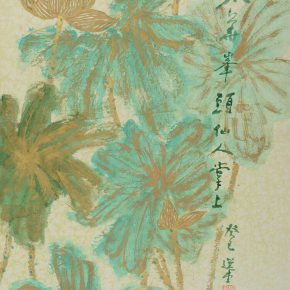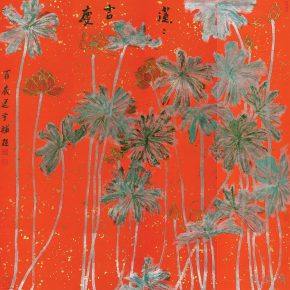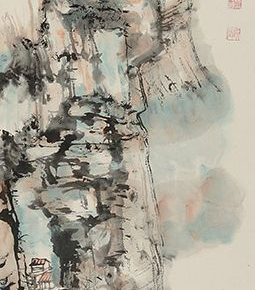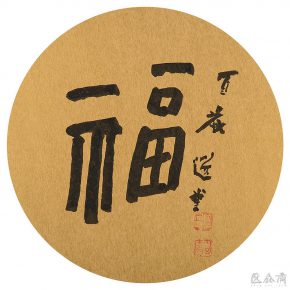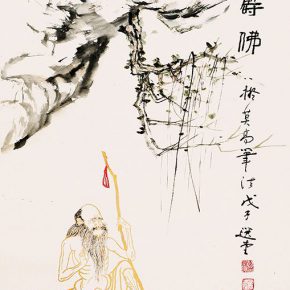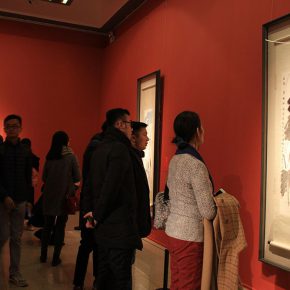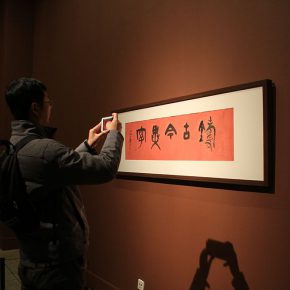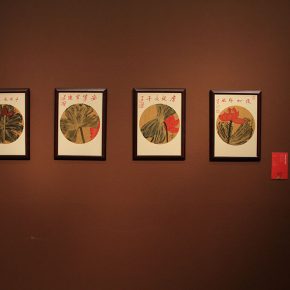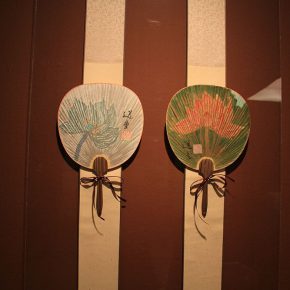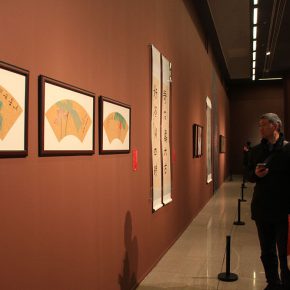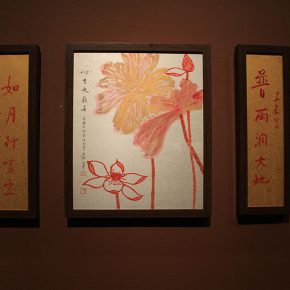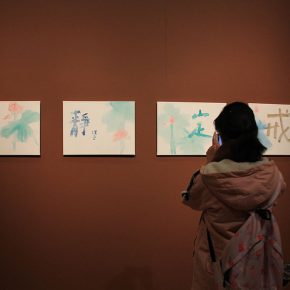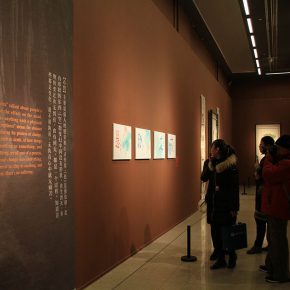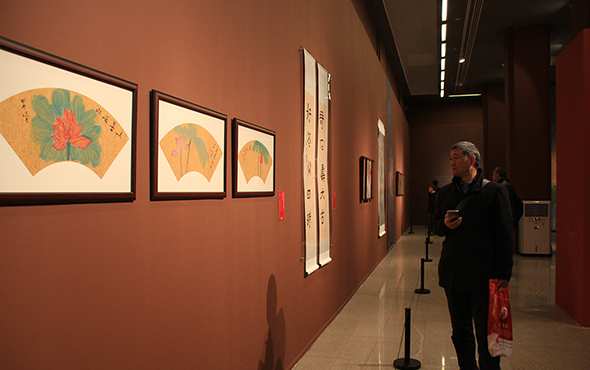
On the morning of 18 November, 2017, hosted by the National Art Museum of China and the University of Hong Kong, “Glamour of Jao’s Lotus: Touring Exhibition of Lotus-themed Artworks by Professor Jao Tsung-I” opened in the National Art Museum of China. Sun Jiazheng, Vice Chairman of the 11th CPPCC and Honorary Chairman of the China Federation of Literary and Art Circles, Luo Shugang, Party Secretary and Minister of Culture of the People’s Republic of China, Zhang Xiaoming, Director of Hong Kong and Macao Affairs Office of the State Council, Tie Ning, Chairman of the China Federation of Literary and Art Circles and Chairman of the China Writers Association attended the opening ceremony, Wu Weishan, Director of the National Art Museum of China, presided over the opening ceremony.
Luo Shugang, Minister of Culture, the People’s Republic of China, extended his warm congratulations at the opening of the exhibition. Jao Tsung-I has devoted himself to academic research and artistic creation throughout his life. Jao’s learning runs through the past and present, the West and East, enjoying a high reputation in both the academic and art circles at home and abroad, while he has made unremitting efforts in the development of the culture, arts and academics of Hong Kong, as well as the cultural exchanges between Hong Kong and the Mainland, having made outstanding contributions to promoting Chinese culture. Jao Tsung-I is a rare “scholar-type” master of calligraphy & painted art.
Jao Tsung-I, also known as Bo Lian and Gu An as appellation and Xuan Tang by his literary name, was born in Chaozhou in 1917. He has been engaged in academic research and teaching for more than 80 years. Learned in both the ancient and modern, Chinese and Western research, he is an “internationally renowned sinologist and leading scholar”, and “the pride of the entire Asian culture”, comparable with Qian Zhongshu and Ji Xianlin in the north of the country.
In the past ten years, lotus has become the main theme of Jao Tsung-I’s paintings. Professor Lee Cheuk-fen, Director of Jao Tsung-I Petite Ecole?of the University of Hong Kong, wrote in his foreword that Jao Tsung-I’s father named him “Tsung-I” because he hoped his son would study Zhou Dunyi, the master of Neo-Confucianism in the Song dynasty, whose “Ode to the Lotus Flower” was widely known, and laid the noble symbol of lotus. However, with reference to Professor Jao Tsung-I’s statement, the lotus was mainly inspired by Bada Shanren’s “Flowers of the River”. Jao has pioneered a lot of new techniques and ways for lotus paintings, which symbolize his continuous exploration of the art of painting.
The exhibition is held in Hall 13-17 on the 3rd floor of the National Art Museum of China, around the works themed on lotus, created by Jao Tsung-I, to present the calligraphic charm with the combination of various styles and the magnificent & changeable image of splash-ink lotus, which reflects the profound cultural realm and self-made portrayal during meditation. Though Jao is advanced in age, he still attended the opening ceremony using a wheelchair. Jao Tsung-I and his family, together with the Jao Tsung-I Academic Foundation, donated a total of 10 pieces (sets) of wonderful works including 4 pieces (sets) of Chinese painting and 6 pieces (sets) of calligraphy, to the country through the exhibition.
Jao Tsung-I learned calligraphy and painting from Yang Shi in Jinling in 1929, specializing in landscape and the Song running script. In 2011, Jao Tsung-I was elected as the 7th President of Xiling Seal Art Society. His calligraphy is rooted in the inscriptions on ancient bronze objects and stone tablets, and the running script blended the unrestrained & delightful rhyme of various masters in the Ming Dynasty, while the seal script combines the merits of the Jin Nong and Deng Shiru, to form his own style.
The protagonist of this exhibition – “Winding Lotus” has an originality that is rooted in both the modern taste of ink & brush, and the relationship between Jao Tsung-I and Buddhism. Jao was addicted to Buddhist scriptures in his childhood, and started to practice Zen meditation when he was in his teens. He learned Sanskrit when he was 40 years old, and is comparable with Ji Xianlin in the north of the country. Jao’s research results of Buddhism are embodied in the “Buddhist Origin Theory”. Lotus is a symbol of Buddhism, while the Buddha and Bodhisattva often carry a lotus as a metaphor to represent a sense of calmness, innocuous, light, freedom and liberation in Buddhism. Gold is the color of the Buddhakaya, because people regarded gold as the most precious metal, shaping the Buddha’s gilded image in order to express the respect of the Buddha. The gold & silver lines on the splash-ink petals, and the gold & silver branches & leaf veins created by Jao Tsung-I show the impact of Buddhism on him. The literati interest and Zen Buddhism are perfectly blended into the brush & ink, and color. It is as Wu Weishan commented: it manifests his “great academic and artistic accomplishments”, and all the learning can be connected with the art. The studies of life and academics often become the nourishment that art can draw, to produce a new idea and their own style.
“Auspicious Lotus” performs the elegant and graceful lotus echoing the harmony of the times, which is the dream and aspiration of Jao Tsung-I. Just as Monk Shi Tao said “establishing the spirit in the sea of ink, the life is determined by the tip of a writing brush, the appearance replaced on the screen, giving light in the chaos, even if the brush is not a brush, ink is not ink, a painting is not a painting, I perform what I am.”
This exhibition remains on view till November 26.
Text and photo by Wu Huixia, translated by Chen Peihua and edited by Sue/CAFA ART INFO
(Part of photos courtesy of the organizer)


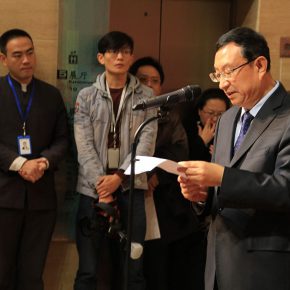
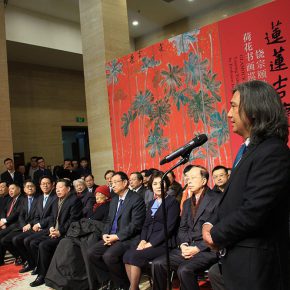
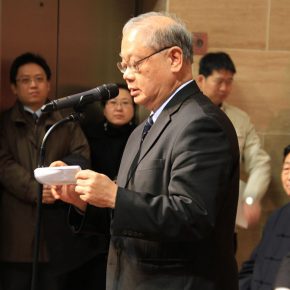
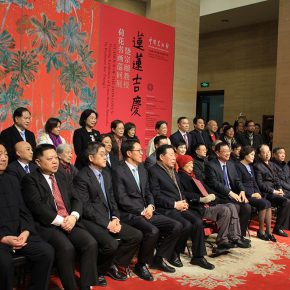
-138-x-34-cm-x-2-2017-in-the-collection-of-National-Art-Museum-of-China-290x290.jpg)
